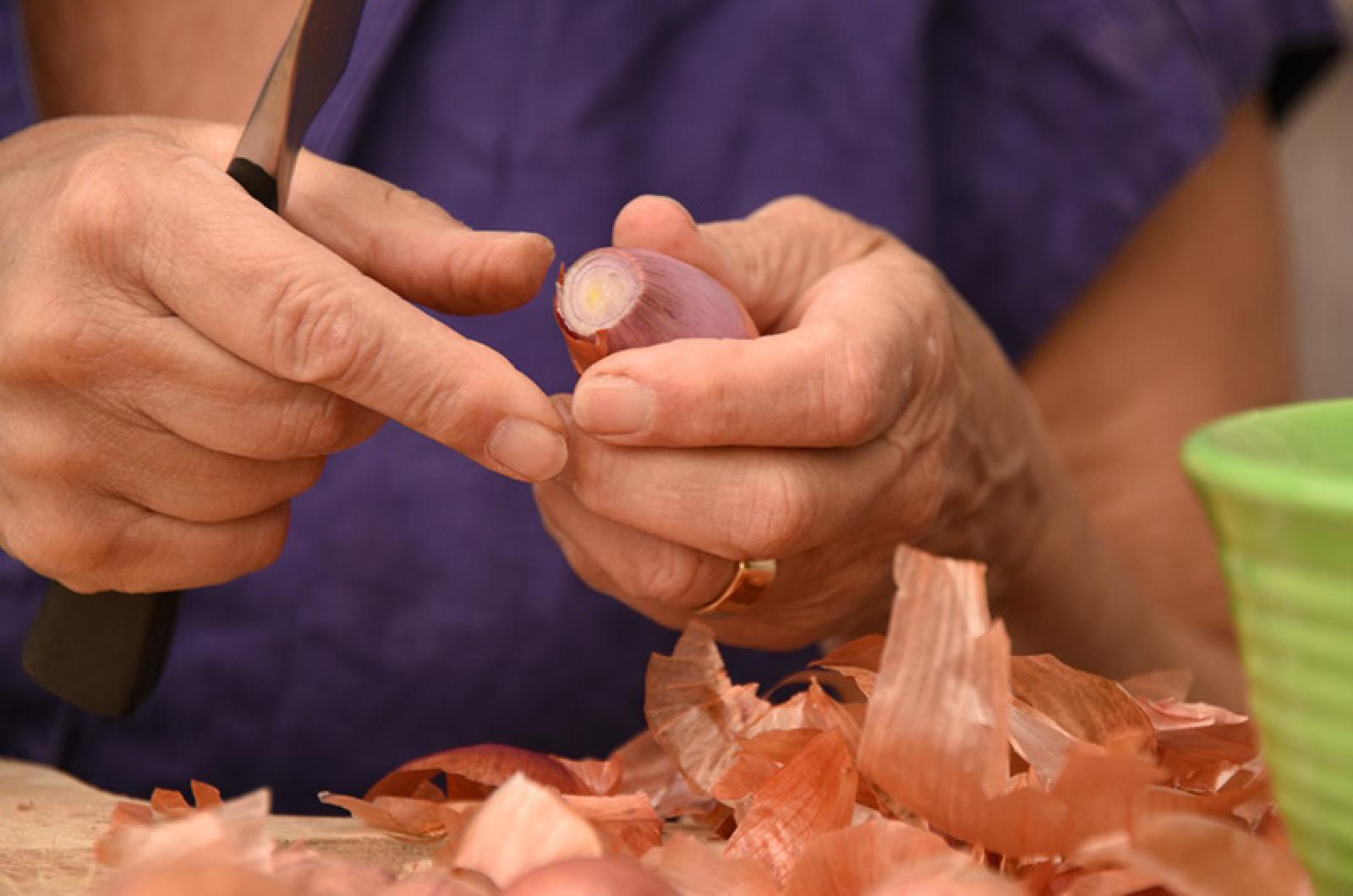For better, for worse, for richer, for poorer, in sickness and in health, to love and to cherish, to make meals or reservations — let’s face it, sustenance responsibilities should be part of the vows. In our 36 years of marital bliss I have voluntarily cooked most of our meals. Essentially because that’s what I love to do. My wife, thank the gods of wedlock, loves to make presentations, prepare a table, wash the dishes. That’s her therapy.
We met working at the same television station. Working day in and day out involved collaboration and steps where you have no control. There’s phoning strangers, setting up interviews, going out with camera crews, writing scripts, sitting in editing rooms, lots of rushing, lots of waiting. So it’s good for the soul to come home, go into the kitchen, grab a vegetable and a knife and start slicing and dicing. Cooking leading to eating is closer to instant gratification than what I was doing the rest of the day. And let’s face it, instant gratification is seldom offered past childhood.
For me, cooking is an art not a science. I read cookbooks as if they’re novels — to get inspiration and stimulation. I don’t believe in the literalness of recipes. Baking requires precision; it’s a science. Cooking a dinner is a creative process that requires enjoyment. And this comes from confidence, which comes from experience.
My experience came from the survival instinct. It all started back in college in that hotbed of adolescence called “living off-campus.” During those years in a house of four young men it felt like the motto should have been “Grow up or throw up.”
One of the turning points occurred when a housemate concocted his version of Swedish meatballs. To be kind, they were more like Sweetish meatballs, considering he carmelized them in a paste of ketchup and grape jelly. For the adjoining salad, another housemate bought a head of cabbage, which he mistook for a head of lettuce. Interesting dinner. So memorable I threw myself into the informative pages of Irma Rombauer’s Joy of Cooking, the original “Gastronomy for Dummies.”
What truly released my inner Julia Child, however, was Julia Child herself. Six years out of college, I found myself working at WGBH, Boston’s PBS station, in an office across the hall from Herself. While hearing her rehearsing her show, I’d walk into the studio and sit at the back. As she cheerfully mastered the art of French cooking for befuddled Americans who see stoves as altars for other religions, I took notes. In short order, my skills improved. I’m convinced she’s the reason even American restaurants improved.
Julia Child was easiness personified. Her mission was to demystify the inner workings of cuisine, to show how anyone can cook. And she managed to do this with an easy manner, a demeanor that said she was one of us.
While I was learning from Julia what goes with what, she also taught me to keep a well-stocked larder. She taught me how to shop so that my pantry and refrigerator contained enough ingredients to make a meal any time I got home and didn’t want to go out again to hunt and forage. When I saw her shopping at Savenor’s, her favorite Cambridge market, a walk from her home and mine, I followed her around like a dog with opposable thumbs.
In 1980 the Family Health Cookbook came out, compiled and edited by Alice White, working for the Society for Nutrition Education. It was a bible of up-to-the-minute gospel on what was good for you. Its 250-plus pages of recipes had been assembled with scientific care, “tasted and tested to meet the highest standards for good eating and good health.” So many of them tasted and tested by yours truly, with at least three of them invented by me.
The book was hatched in Cambridge, not far from Julia’s home. For most of the time during the compiling of these items, Alice and I were also an item. This lasted for a couple of years of tasting and testing — and changing and testing again. I learned the finer points of what seasoning worked where and which played well with others. This knowledge of herbs and spices distinguishes baby boomers from previous generations when anything beyond salt and pepper was considered exotic, or at least foreign. My mother, for example, kept a tin of dry mustard she received at her wedding but I never saw her use it.
Thanks to Julia and Alice, I will always have shelves dedicated to soups, rice, pasta, canned tomatoes, flour, olive oil, vinegar, dried fruits and nuts, as well as containers of just about every spice and herb. And below there will always be baskets of potatoes, shallots, onions and garlic.
In jazz, when you’re “cooking” you’re heating up and jamming together. That’s why I see it as an art. But it can also mean to alter or falsify to show something in a better light; hence my disrespect for following directions.
Arnie Reisman and his wife, Paula Lyons, regularly appear on the weekly NPR comedy quiz show, Says You! He also writes for the Huffington Post.




Comments (7)
Comments
Comment policy »